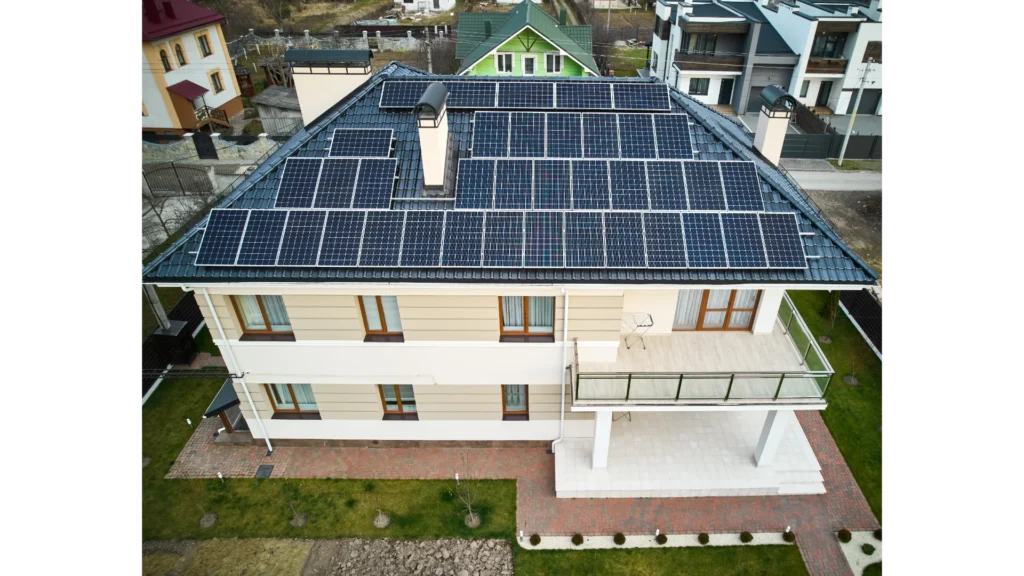
Solar panels have become increasingly popular as a sustainable and cost-effective energy source in recent years. However, many people are still uncertain about the longevity of solar panels and how long Solar Panels typically last before needing to be replaced.
The lifespan of a solar panel can vary depending on several factors, including its quality, usage, and maintenance. Understanding these factors is essential for anyone considering investing in solar panels or those who already have them installed.
In this article, we will explore the typical lifespan of solar panels and the various factors that impact their longevity. We will also provide tips on maintaining and caring for your solar panels to maximize their lifespan while minimizing costs.
By understanding these aspects of solar panel ownership, readers can feel confident in making informed decisions about their renewable energy systems’ sustainability and durability.
The longevity of solar panels is subject to various determinants that must be considered when assessing the lifespan of this renewable energy source.
One crucial factor in a solar installation is the quality of materials used in manufacturing. High-quality components, such as photovoltaic cells and protective coatings, are essential for a reliable and long-lasting solar power system. These components resist wear and tear and can last over 25 years, ensuring the durability of the solar panels. Conversely, low-quality components may fail prematurely and reduce the overall panel durability, making choosing a reputable solar installer important.
Another determinant of solar panel longevity is the environmental conditions in which they are installed. Extreme temperatures, humidity levels, and weather events like hailstorms can cause damage to solar panels over time. Thus, choosing a reputable installer to help you select durable equipment that meets your needs is essential.
Lastly, regular maintenance plays a significant role in prolonging the life of solar panels. Routine inspections and cleaning help detect issues before they become more severe or irreversible. Furthermore, keeping the panels clean ensures optimal performance by removing any dirt or debris that might obstruct sunlight absorption.
Ultimately, understanding these factors helps determine how long your solar panels will last. As an environmentally conscious consumer seeking freedom from fossil fuels dependence, investing in high-quality equipment with proper maintenance practices will provide you with reliable power production for decades to come.
Understanding solar panel warranties is essential for assessing photovoltaic systems’ expected lifespan and performance.
Typically, solar panel manufacturers offer two types of warranties: a manufacturer warranty and a performance warranty. These warranties are often categorized into different tiers based on their coverage and duration.
The manufacturer’s solar inverters warranty will cover materials and workmanship defects. In contrast, the performance warranty for the first solar panels guarantees that the panels in a solar system will produce a certain percentage of their rated power over a specified period.
The length of these warranties varies by manufacturer but is typically around 25 years for both types.
However, it’s important to note that just because a warranty is offered for 25 years doesn’t mean that the panels will stop producing power after that time.
Many photovoltaic systems continue to produce electricity long after their warranties have expired, despite panel degradation rates.
When considering solar panel warranties, it’s important to consider what they cover.
For example, some solar panel system manufacturers may exclude damage caused by extreme weather conditions or improper installation from their coverage.
It’s important to read the fine print carefully and choose a reputable panel manufacturer with comprehensive coverage to ensure your investment in the panel is protected for as long as possible.
Maintenance and care are critical components that ensure photovoltaic systems’ optimal functioning and efficiency. Solar panels are designed to last for decades, but their lifespan can be affected by the environment, weather conditions, and maintenance practices. Regular cleaning and inspection of solar panels can increase their longevity and performance and reduce the risk of damage or malfunction.
To maintain your solar panels effectively, you should consider implementing the following measures:
Clean your solar panels regularly to remove dirt, dust, debris, or bird droppings that can accumulate on them over time. This can be done using a soft brush or sponge with soap and water.
Periodically inspect your wiring connections, especially those in the panel, to ensure there are no loose or corroded wires that could cause electrical problems.
Check your inverter regularly to ensure it is functioning correctly. Inverters convert DC power produced by solar panels into AC power used in homes or businesses.
Trim nearby trees that may shade your solar panels to increase sunlight exposure.
Hire a professional installer or technician to perform annual maintenance checks on your panel system.
In summary, proper maintenance and care for solar panels can help extend their lifespan while boosting efficiency and performance. Following simple tips like cleaning them regularly, inspecting wiring connections, and checking inverters for correct functionality, among other recommended measures, you will ensure the optimal functioning of photovoltaic systems for years to come without any major setbacks.
To optimize the operational life of photovoltaic systems, it is crucial to incorporate appropriate measures that maximize the lifespan and preserve the efficiency and performance of solar panel technology.
One way to achieve this is through regular cleaning and maintenance of solar panels. Dirt, dust, leaves, bird droppings, and other debris can accumulate on the surface of solar panels over time and reduce their energy output by blocking sunlight. It is recommended to clean solar panels at least twice a year in areas with low rainfall or high dust levels.
Another way to extend the lifespan of solar panels is by ensuring they are installed correctly. Proper installation helps prevent damage caused by weather events such as strong winds or hailstorms. Solar panels should be mounted securely on a sturdy frame that can withstand harsh environmental conditions.
Moreover, hiring a professional installer who follows industry best practices for wiring and grounding is essential to avoid electrical faults that could lead to system failures or safety hazards. Additionally, ensuring the panel is properly installed and maintained is crucial for optimal performance and safety.
Finally, maximizing the lifespan of solar panels also involves monitoring their performance regularly. Tracking energy production allows homeowners or businesses to detect issues before they become more significant problems affecting overall system efficiency.
Advanced monitoring systems provide real-time data on energy generation, giving users actionable insights into how well their photovoltaic panel systems are performing so they can take corrective action if necessary without delay.
To ensure the continued efficiency and performance of photovoltaic systems, homeowners and businesses need to plan for the eventual replacement of their solar panel technology. While solar panels are designed to last between 25-30 years, they will eventually need to be replaced due to degradation over time. Individuals must prepare for this eventuality by understanding when their panels need replacing and how much it will cost.
Here are three factors that should be considered when planning for solar panel replacement:
Age: As mentioned, most solar panels have a lifespan of around 25-30 years. However, depending on the specific brand and model, some may last longer or shorter than others. It’s important to keep track of when your panels were installed so you can anticipate when they might need replacing.
Performance: Over time, solar panels may begin to degrade in performance. This can happen due to a number of factors, including weather damage, wear-and-tear on materials, or simply age-related deterioration. Regular maintenance checks can help identify any issues before they become major problems.
Cost: As with any major home improvement project, the cost is important when planning for solar panel replacement. Prices will vary depending on the size of your system and the type of panels being used. Be sure to research different options to make an informed decision about what works best for your budget.
By considering these factors and preparing accordingly, homeowners and businesses can ensure that their solar energy panel systems continue providing renewable power long into the future.
In conclusion, the longevity of solar panels is influenced by various factors such as the quality of materials used, environmental conditions, and maintenance practices.
While most solar panels have a warranty that guarantees their performance for up to 25 years, it is important to note that this does not necessarily mean they will stop working after this period. Rather, it means that their efficiency may decrease gradually over time.
Regular maintenance and care are crucial to ensure solar panels’ maximum lifespan and efficiency. This includes cleaning them regularly, monitoring their performance, and addressing any issues promptly.
In addition to maintenance practices, planning for the eventual replacement of solar panels should be considered when investing in renewable energy solutions. By being proactive in these efforts, individuals and businesses can reap the benefits of solar energy for many years.
Solar panels are a significant source of renewable energy. A solar panel’s maximum energy output depends on various factors such as size, efficiency, and environmental conditions.
A standard 60-cell solar panel has an average power output of around 270 watts under ideal conditions. However, high-efficiency solar panels can generate up to 400 watts or more per panel.
It is important to note that the energy output also varies depending on the location and orientation of the solar panel. For instance, if it is placed in an area with ample sunlight exposure and positioned towards the south, it will have a higher energy output compared to one situated in a shady location or facing east or west.
As such, it is crucial to consider different factors when determining the maximum energy output of a solar panel for optimal performance.
The sustainability of solar panels is a critical concern, and one way to address this issue is through recycling.
The good news is that solar panels can be recycled once they reach the end of their lifespan. This process involves breaking down the different components of the panel, such as glass, aluminum frames, and silicon cells, into reusable materials.
However, it should be noted that the recycling process for solar panels is not yet fully developed and faces some challenges, such as high cost and low demand for recycled materials. Therefore, while recycling offers a promising solution to reduce waste in the solar industry, further research and development are necessary to improve its efficiency and economic viability.
In recent years, governments around the world have implemented various incentives to encourage the adoption of renewable energy sources such as solar panels.
These incentives can take many forms, including tax credits, rebates, and grants.
The availability and nature of these incentives vary widely depending on the country and region in question.
For instance, some countries may offer more generous subsidies for residential installations, while others may prioritize large-scale commercial projects.
In general, however, government incentives play a crucial role in making solar energy more accessible and affordable for consumers who might otherwise be hesitant to invest in this technology.
The lifespan of a solar panel can be affected by various factors, including temperature and weather conditions.
High temperatures can reduce the panels’ efficiency, while extreme weather events such as hailstorms or heavy snowfall can damage them.
However, modern solar panels are designed to withstand harsh weather conditions and have an expected 25-30 years lifespan.
It is important to note that regular maintenance and cleaning can help extend the lifespan of solar panels, regardless of the prevailing weather conditions.
Proper installation, maintenance, and monitoring are critical for ensuring solar panels’ maximum performance and longevity.
The installation of solar panel systems on homes or properties can have a positive impact on their overall value. Several studies have shown that homes equipped with solar panels sell faster and at a higher price than those without them.
This is due to the fact that potential buyers are drawn towards energy-efficient features and cost-saving measures, which solar panels provide. Additionally, owning a solar panel system may also increase a property’s desirability in areas with incentives for using renewable energy sources.
However, it is important to note that the value added by these systems will depend on various factors such as location, size of the system, energy savings achieved, and maintenance costs.
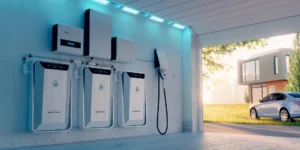
What Is The Expected Lifespan Of Batteries In A Residential Solar System? Overview of Residential Solar Systems Residential solar systems have gained popularity in recent
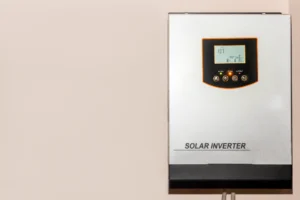
Difference Between String And Microinverters In A Solar Panel System? The world is gradually shifting towards renewable energy sources, with solar panel systems being one

What Is The Average Roi For A Residential Solar Panel System? As the world becomes increasingly aware of the need to transition to sustainable energy
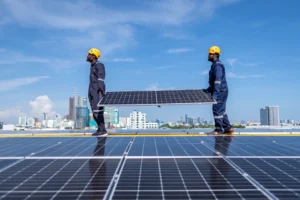
What Are The Most Common Mistakes When Getting A Residential Solar? The most Common Mistakes When Getting A Residential Solar System Solar energy has become

How To Know If My Solar Compatible With Electrical Setup? Installing a solar panel system is an excellent way to reduce reliance on traditional electricity
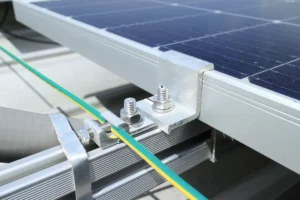
How Do I Ensure That My Solar Panel System Is Properly Grounded? Properly grounding a solar panel system is crucial to ensure safety, optimize performance,